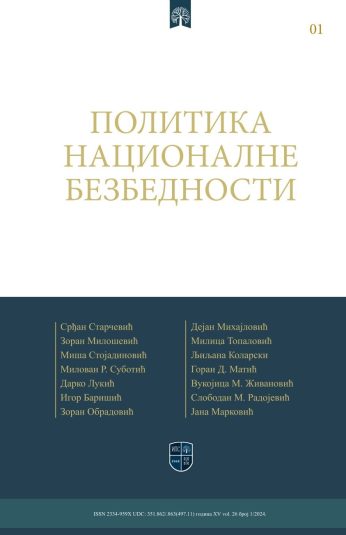ARICLES AND STUDIES
INFLUENCE OF „WOKE CULTURE” ON SECURITY OF CENTRAL AND EASTERN EUROPE
Abstract
This paper intends to research the causality between evolving cultural models of the West and societies of Central and Eastern Europe, which accepted and emulated these models ever since the Cold War ended in a desire to be integrated into the West as they possibly could. After the Iron Curtain was lifted, both the post-communist countries and the West were eager to accept one another, as the Western values and the liberal consensus of that period reflected basic human and civil rights and freedoms – such as speech, movement, fair elections, independent media – all that these countries were lacking during the previous period. American cultural and diplomatic victory, combined with the fact that they were the only remaining global superpower allowed the American culture in the broadest sense to strongly influence nearly every country in the world, and particularly in those who saw salvation in every sense in Euro-Atlantic integrations. They began to introduce the Western cultural models and value system in their societies, but the problem occurred as these societies were not exactly compatible with these models and values. Additionally, the liberal consensus was constantly evolving, with a strong emphasis on political correctness and social sensitivity, which brought us to the current dominant cultural paradigm from the West, the woke culture. The goal of this paper was to identify how the current liberal consensus and the current cultural paradigm affect horizontal and vertical security aspects in countries of Central and Eastern Europe. The authors further identify a precise picture of both the dominant Western cultural paradigm and its reflections on societies of post-communist countries, with a detailed insight of Ukrainian example, which is at the same time the most extreme but the most representative example as well. Ukraine did not adopt pro-Western tendencies immediately after the Cold War ended, but they developed them with great intensity which culminated in 2004 street protests that brought pro-Western politicians to power. But Ukrainian people faltered in their dedication to the West, so they turned once again to pro-Russian politicians, only to falter again which brought another street protests and deposition of then-president. Due to strong anti-Russian sentiments prevalent after the latest revolution and ostracism of ethnic Russians and their culture that followed, ethnic Russians reacted by voting for annexation to Russia in Crimea and rebelled against the Ukrainian state in the eastern part of the country which is now de facto independent. All those events, combined with efforts to adopt Western values and culture even when they conflicted with their national identity made that country semi-functional, susceptible to ideas originating from extreme portions of the political spectrum, and created not only security threats, but war as the most extreme security threat. In closing chapters, the authors checked theoretical theses of eminent scientists against the lens of development and the current state of political, cultural and security situations in the countries of Central and Eastern Europe, and defined causalities between the current cultural paradigm and real situation in the subject region. In the end, the authors give short summary of potential security challenges and threats in the subject region as a result of previously elaborated cultural and social relations and mechanisms.
References

